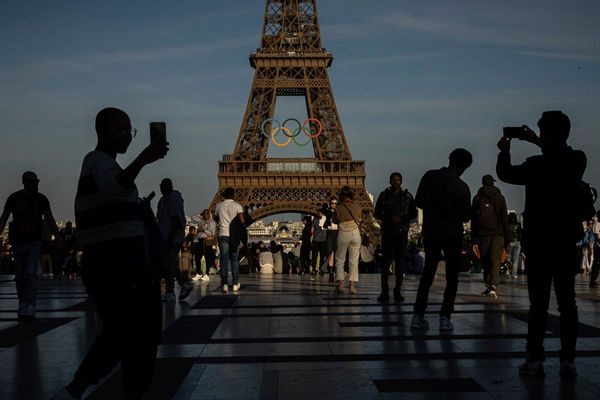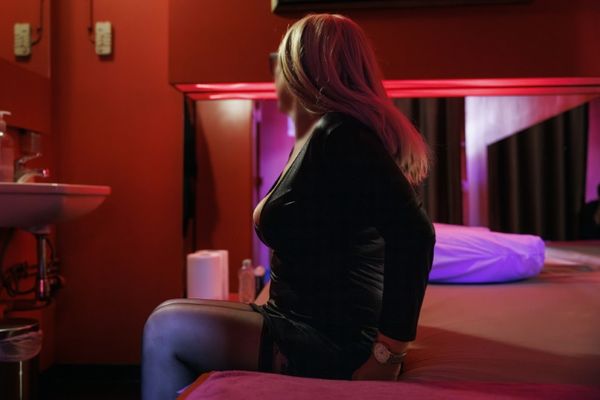Ayah* was unbuckling her one-year-old daughter from the back seat of her car when she was startled by the sound of a revving engine behind her.
As the vehicle roared towards them, Ayah abandoned her stroller and ran with her baby clutched in her arms.
"I didn't even close the car door, I just ran away," she said.
"It came so close to me and my baby."
The driver, a Caucasian male who Ayah guesses was in his mid-40s, then followed her on foot into the Perth shopping centre.
"He stared at me right in the eye and laughed," she said.
When she called police to report the menacing encounter and ask them to review CCTV footage to track the driver's registration, she was left disappointed by the response she received.
Ayah said the policewoman who took her call seemed sympathetic at first but that shifted when she explained that she believed she was targeted because of her identity.
"When I told her that I am visibly Muslim, and I wear the hijab, and I'm covered and I think that's why he did it, because there is no other reason, her attitude changed," she said.
For Ayah, the driver's behaviour was threatening and built on previous experiences in Perth where strangers grunted about "halal food and terrorism" when she passed by.
"I wish it was just that, I wish it was just that one experience but there have been others that I didn't report," Ayah said.
"It's scary because I have children who will be visibly Muslim themselves, and I worry about what sort of country they'll be growing up in.
Her experience is just one of many incidents reported to the Islamophobia Register Australia in 2018 and 2019.
New report analyses 247 incidents
The latest Islamophobia in Australia report, released today, analyses 247 verified face to face and online incidents reported in the year before and after the Christchurch massacre.
Incidents include physical attacks, assault, damage to property, non-verbal harassment, intimidation and online threats.
The report's release coincides with the third anniversary of the 2019 terrorist attacks in New Zealand, where an Australian far-right extremist shot and killed 51 Muslims during Friday prayers.
In the two weeks after the Christchurch attacks, the volume of incidents reported to the Islamophobia Register surged, with "offline" cases increasing four times and "online" cases increasing 18 times.
The majority of incidents involved hate speech, followed by discrimination then graffiti and vandalism, while severe property damage accounted for 2 per cent and "damage to individuals", 3 per cent.
More than half of insults targeted the individual's religion and/or religious visibility, followed by foul language and xenophobic comments, while remarks associating Islam with terrorism made up 24 per cent and the "presumption that Muslims kill/harm" made up 15 per cent.
Men identified as majority of perpetrators
Like previous iterations of the report, men were overwhelmingly the perpetrators.
Of the physical cases reported, men were identified as the perpetrators in 78 per cent of incidents, while their targets were most commonly women who made up 82 per cent of victims.
Visibly Muslim women were the most common targets, with 85 per cent of reported incidents involving women wearing the hijab, and children were present in 15 per cent of cases.
Nabil*, who lodged a report with the Islamophobia Register in 2019 on behalf of his wife, said it was clear that she was on the receiving end of Islamophobic taunts more often than him.
The PhD student who had moved to Australia from Bangladesh was leaving his university accommodation in Camden in Sydney's south-west, accompanied by his pregnant wife who wears a hijab, when young men and a woman in a passing car yelled expletives and a barrage of comments linked to their appearance.
"My wife was quite visible in Islamic clothing," he said.
"It doesn't happen at other times."
Nabil said the incident terrified his wife, who felt fearful of going outside, particularly while alone, and prompted their decision to move to Sydney's west, where there is a larger Muslim community.
"I didn't feel safe in those more remote areas where there is not much Muslim people around," he said.
But according to the data collected, multicultural areas showed "not much difference" from their less diverse counterparts, with 51 per cent of incidents occurring in "multiculturally more diverse suburbs".
Guarded areas with security presence and surveillance cameras did not appear to deter perpetrators, with the number of incidents reported in such areas increasing to 75 per cent compared to 60 per cent during the previous reporting period.
That included shops (15 per cent), public transport (12 per cent), leisure centres and parks (12 per cent), and schools and universities (11 per cent).
'Tip of the iceberg'
The report's author, Dr Derya Iner from Charles Sturt University's Centre for Islamic Studies and Civilisation, said the analysed cases are "only just the tip of the iceberg".
"Islamophobia, like other hate crimes, is consistently under-reported," the report states.
"Technical barriers to reporting include limited access to reporting tools and lack of English proficiency.
She said the reported cases demonstrate that anti-Muslim hate "breaches social and professional hierarchies".
"The statistics in 2018-19 from the Western countries including Australia are in tandem with present report findings that confirm Islamophobia is a continuum and Christchurch-type attacks are the last link in the anti-Muslim hate chain."
Of the 109 online cases — including verbal hate shared through private messaging, political statements and memes — content shared on Facebook made up 86 per cent.
Post-Christchurch incidents of online hate rhetoric which sought to associate Muslims and Islam with terrorism doubled when compared to incidents reported prior to the attacks.
The report singles out former senator Fraser Anning, who blamed Muslim immigration in the immediate aftermath of the Christchurch attack.
"Far-right parties and political leaders had a major role in creating online hate agendas, which were reproduced by far-right group administrators and followers," the report states.
Among the online cases analysed, posts made by far-right groups and individuals went further by "applauding" the Christchurch terrorist for the atrocity.
"Some used insensitive language by making jokes and caricaturing the Christchurch attacks," the report found.
"Some violent extremists expressed their desire to seek more killings … other extremists suggested more brutal means to cause more bloodshed."
However, Dr Iner said that, on a broader level, Australia showcased "solidarity and support" with Muslims in the aftermath of the attacks.
Despite that, reports made by witnesses to Islamophobic incidents have trended downwards, from 41 per cent during the last report, to 24 per cent.
"The gradual drop in witness reporters indicates an urgent need to activate bystanders to reject the hate culture by reporting the hate incidents," the report said.
The report makes numerous recommendations directed at government, including the need for a concerted effort to break patterns of abuse directed at Muslim women and children and "training and mobilisation" to encourage bystanders to speak out.
It also recommends that government and security agencies reconsider whether self-declared terrorist organisations such as ISIS, should be categorised as "ideological or political" rather than religiously motivated, suggesting the current classifications contribute to Islamophobia.
*names have been changed for privacy







